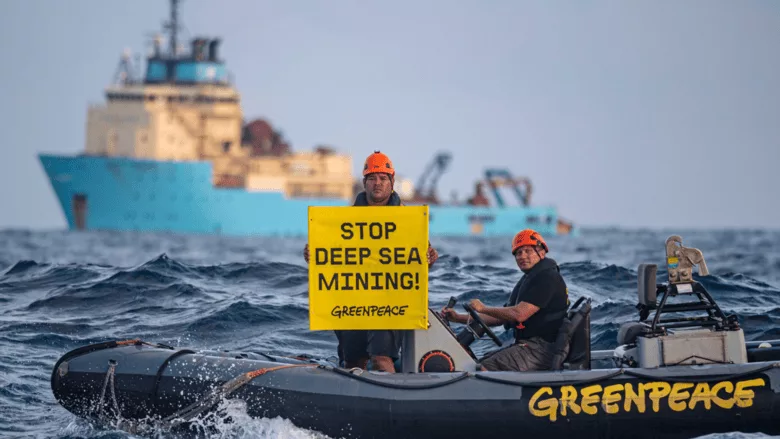Interior Department Eyes First Offshore Mineral Lease in Decades
Interior Department Launches Public Process for Historic Seabed Mineral Lease in American Samoa

Image via Greenpeace.org
In a move poised to reshape the future of offshore mineral development, the U.S. Department of the Interior has announced the initiation of a public process to explore seabed mineral leasing in federal waters off American Samoa—the first such step in over 30 years.
What is deep sea mining? To put it simply, the ocean floor holds key minerals we need for clean energy, but tapping into them could come at a serious environmental cost.
“This is what American leadership looks like,” declared Secretary of the Interior Doug Burgum. “While other nations are racing to dominate critical mineral production, President Trump is making sure the United States leads from the front.”
The publication of a Request for Information and Interest (RFI), scheduled for the Federal Register, will open a 30-day public comment period. The effort supports President Donald J. Trump’s May 2025 Executive Order on Unleashing America’s Offshore Critical Minerals and Resources, aimed at restoring “American energy and mineral independence.”
The Bureau of Ocean Energy Management (BOEM), responsible for issuing the RFI, will collect input from diverse stakeholders including Indigenous Samoan communities, maritime industries, and environmental agencies. According to BOEM Principal Deputy Director Matt Giacona, “We are fully committed to an open process that ensures the people of American Samoa are heard and respected.”
Interior currently oversees 3.2 billion acres of the Outer Continental Shelf, a territory larger than the U.S. landmass itself. Any resulting lease sale would undergo rigorous environmental review under the National Environmental Policy Act and comply with other laws like the Endangered Species Act.
Proponents emphasize national security and economic strategy
Secretary Doug Burgum asserts: “This is what American leadership looks like… end our dangerous dependence on foreign supply chains.” The move is part of President Trump’s April Executive Order championing domestic critical mineral access.
- The Bureau of Ocean Energy Management (BOEM) seeks input from diverse stakeholders—including Indigenous communities, fisheries, shipping industries, environmental bodies, and the public—before proceeding.
Environmental and geopolitical critics raise alarms
Greenpeace USA condemns the plan, declaring: “The Pacific is not a sacrifice zone. Its people should not be forced to host a destructive industry they’ve clearly rejected.” They urge public resistance during the comment period, warning “the deep sea is not for sale”.
Earthjustice warns seabed mining “would threaten rare and undiscovered ocean species,” stressing the need for rigorous environmental assessment.
Environmental Health News and Daily Climate highlight broader ecological risks, noting seabed disruption could irreversibly damage fragile habitats, generate sediment plumes, harm fisheries, and undermine ocean carbon absorption.
Legal, international, and procedural concerns
The move bypasses the International Seabed Authority (ISA), to which the U.S. is not a signatory, raising questions about alignment with global regulation.
- Critics point to the ISA and UNCLOS frameworks calling for moratoriums. Multiple Pacific nations—including Samoa and Fiji—along with global environmental coalitions, have urged pauses or bans pending thorough scientific study .
- U.S. Representative Aumua Amata (American Samoa) has publicly opposed current mining technologies that “scrape or vacuum or mine by,” highlighting local cultural and environmental stakes.
Proponents push back: innovation and national interest
- Deep-sea mining firm Impossible Metals supports the RFI process and an auction, arguing autonomous, AI-driven robots can responsibly harvest minerals while minimizing harm.
- Interior officials stress that any lease would require stringent environmental reviews under NEPA, the Endangered Species Act, and Historic Preservation Act.
What’s next? The public comment period closes July 16, 2025. After that, BOEM will digest input to evaluate seabed geology, industry appetite, environmental safeguards, and cultural and navigational considerations. Only then might a lease sale surface—after comprehensive environmental and regulatory vetting.
Looking for a reprint of this article?
From high-res PDFs to custom plaques, order your copy today!









